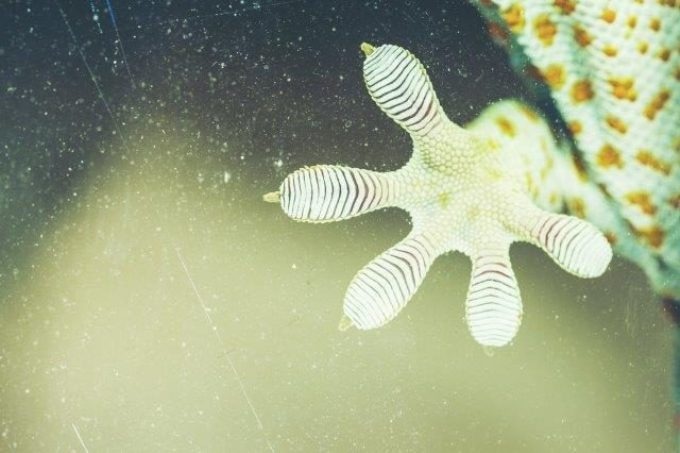Jan 11 2018
Scaling walls and moving across ceilings has always been very easy for animals like geckos. However, there is no material that enables people to climb walls or move across ceilings as easily. At present, researchers have described a dry adhesive in the journal ACS Applied Materials and Interfaces, which might in future render it simple to overcome gravity.
 A gecko-inspired adhesive could someday make it easier to defy gravity. (Photo credit: sarayuth3390/Shutterstock.com)
A gecko-inspired adhesive could someday make it easier to defy gravity. (Photo credit: sarayuth3390/Shutterstock.com)
The ability of geckos to climb up walls is due to their distinctive toe pads that enable them to become rapidly attached to and detached from surfaces. Fascinatingly, the toe pads of geckos include bristle-like layers formed of keratin. It is this bristle-like structure of the keratin in a gecko’s toe pad that assists it in getting stuck. Each pad is covered by microscopic pillars, which eventually branch out into even smaller structures at the tips. Although researchers have produced dry adhesives with analogous characteristics, they do not seem to be as sticky as gecko toes. In certain techniques, multiple layers are used; however, the first layer normally gets damaged upon applying the successive ones. Hemant Kumar Raut, Hong Yee Low, and their collaborators aimed to develop a dry adhesive which, despite being ultra-sticky, could be easily fabricated in huge batches.
The scientists created a dry adhesive by using stiff polycarbonate through a nanoimprinting method to develop web-like layers. The technique is easy to carry out, cost-efficient and scalable. In order to arrest damage to the first layer, the researchers used a sacrificial layer, which dissolved upon applying the second layer. At the end of repetitive attachment and detachment investigations, a mere 20% decrease in stickiness happened after 50 cycles. Such a level of adhesion was found to endure for nearly 200 cycles. According to the scientists, the adhesion of their film was comparable to adhesion of a gecko’s toe. The team tested this by coating the adhesive film under the feet of a miniature robot, which easily moved up a 30° incline.
The Temasek Laboratories at Singapore University of Technology and Design and SUTD-MIT International Design Centre funded the study.